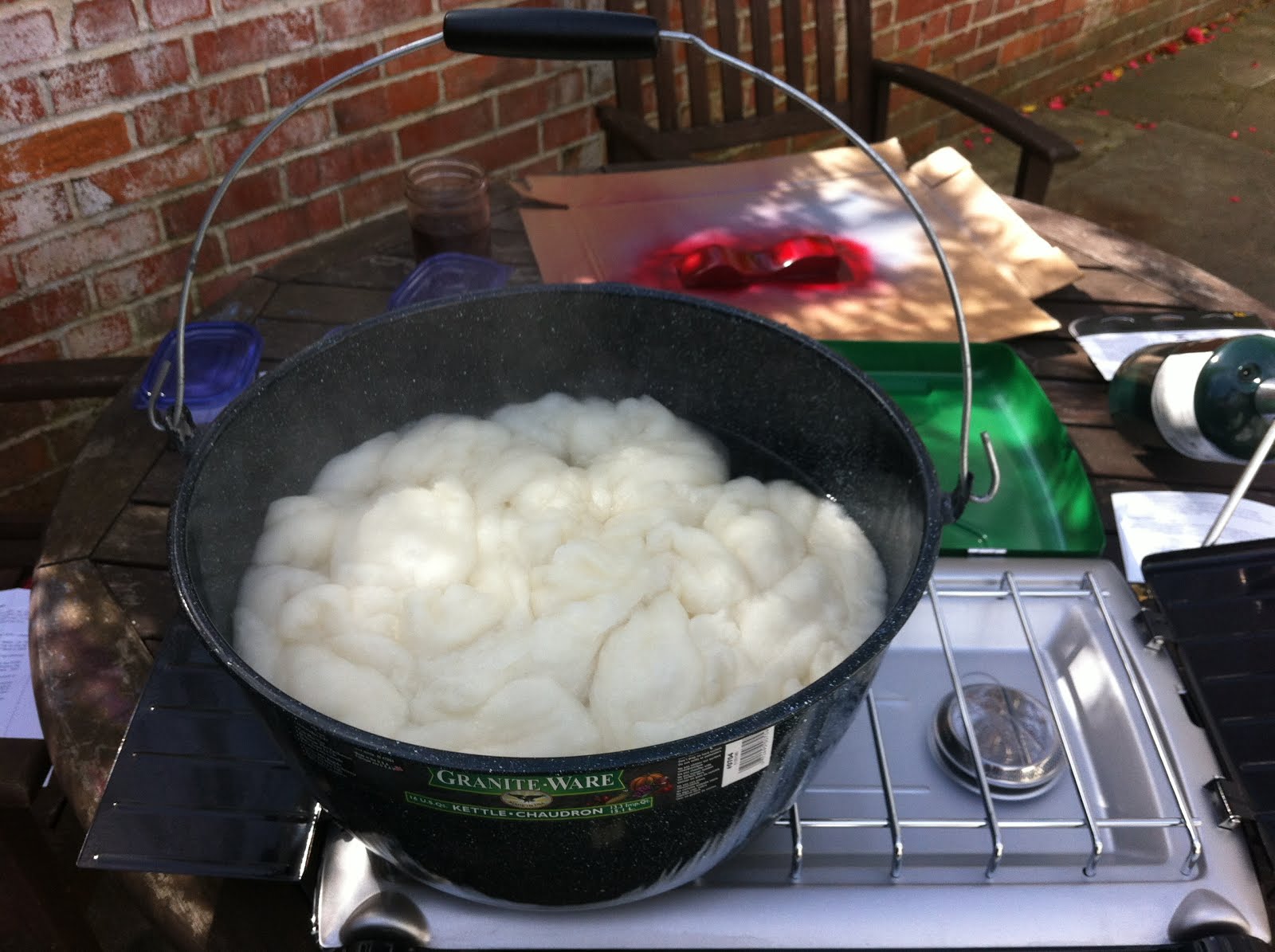Dyeing Fibers and Fabrics with Plants
Beautiful, natural dyes are all around us. Just take a walk in your back yard or local park and you’ll find lots of plants which you can use to safely dye fabrics and fibers.
A simple google search will give you a number of lists of familiar plants you can use for dyeing such as: Avocado pit, Bloodroot, Black Eyed Susan, California Poppy, Coreopsis, Calendula, Dahlia, Dandelion, Goldenrod, Heather, Hollyhock, Indigo, Lavender, Marigold, Purple Basil, Russian Sage, Safflower, Sunflower, Tansy, Walnut, Weld, Yarrow and Zinnia to name a few. Roots, seeds, flower, leaves, and/or stems are used depending on the plant.
The same plants can yield different colors depending on the type of material being dyed (whether the material is a cellulose fiber like cotton, or a protein fiber like wool), and the type of mordant used to prepare the material. A mordant is an inorganic substance, generally an oxide, that combines with a dye to fix it to the fabric or fiber. This is a pot of wool being mordanted with alum in my dye station in the back yard. 
Why dye with natural dyes? The colors are more alive. They glow in ways that pictures cannot do justice. They have beautiful natural variations and are not flat but multidimensional. Dyeing with natural dyes is a great way to get back in touch with nature and for me, it feels wonderful doing something with so much deep history. I especially like when I can use plants native to my area.
The plants I have learned to use for dyeing are: Lavender, Geranium, Calendula, Madder, Weld, Alkanet and Indigo. The first three I get from my own garden and that list is expanding every time I dye. The other plants I purchase in powdered or root form. I am currently planning a dyer’s garden which will include Weld, Japanese Indigo, Coreopsis and Dahlia.
Plants do not always yield the color you might expect and ironically, green is the hardest color to get from plants.
As a dye, Lavender gives a light yellow to tan color. I cut lavender from my garden and snip it into pieces into the dye pot and put the fiber right in with the dye stuffs. I leave the fiber in the pot overnight with the dye stuffs to get as much color in the fiber as possible.
It dries a little bit lighter as with all plant dyes. 

Calendula and Weld both yield a bright sunny yellow with an alum mordant. I have also top dyed this beautiful color with indigo to get a fabulous yarn with greens, blues, and purples.

Madder and Geranium have given me very pretty reds and pink and orange hues.
Alkanet, a plant related to Borage, yields beautiful purples as you can see here.

Indigo dyeing can be a trying chemical process but I’ve discovered instant indigo crystals which are super easy to use and make dyeing with indigo fun. I’ve had success dyeing directly onto mordanted fibers and top dyeing, dipping pre-dyed fibers into the vat for a blend of color as shown in the multi-colored yarn previously.
To learn more about plant based dyes there are some fabulous resources out there. Check out Wild Color by Jenny Dean, Harvesting Color by Rebecca Burgess, The Handbook of Natural Plant Dyes by Sasha Duerr and A Weaver’s Garden by Rita Buchanan to name just a few.
I’d like to thank Sue so very much for allowing me to be here today! Come visit me on Facebook, www.facebook.com/TheMerrySpinster and at my shop www.etsy.com/shop/TheMerrySpinster. I’m also on Pinterest, http://pinterest.com/hlmarano/boards/

No comments:
Post a Comment